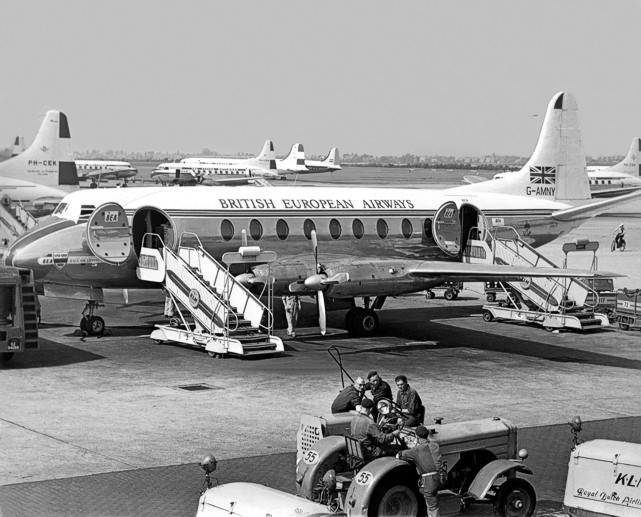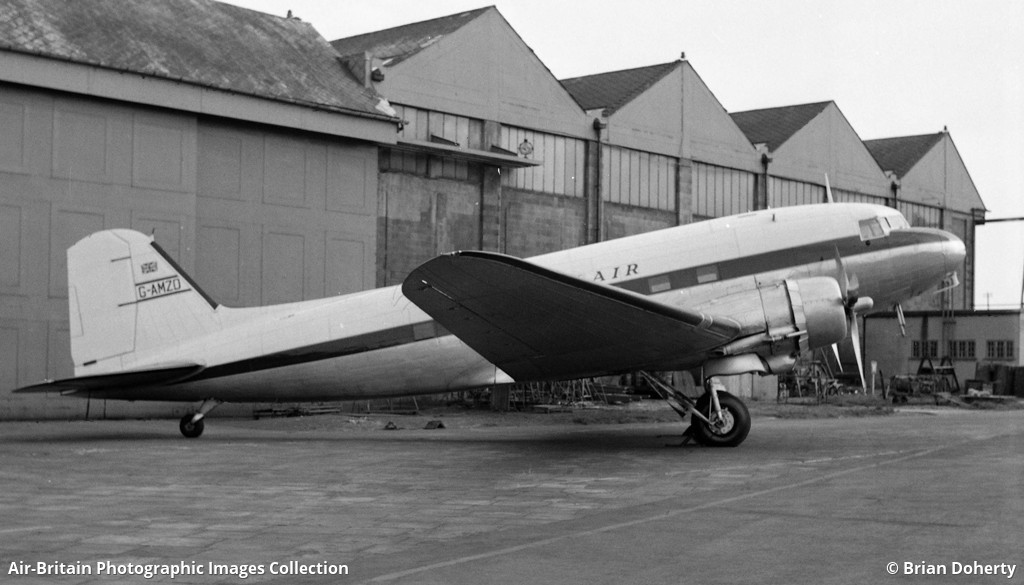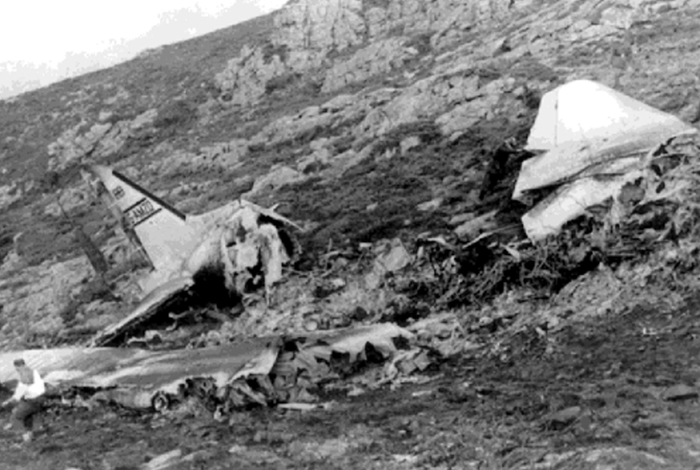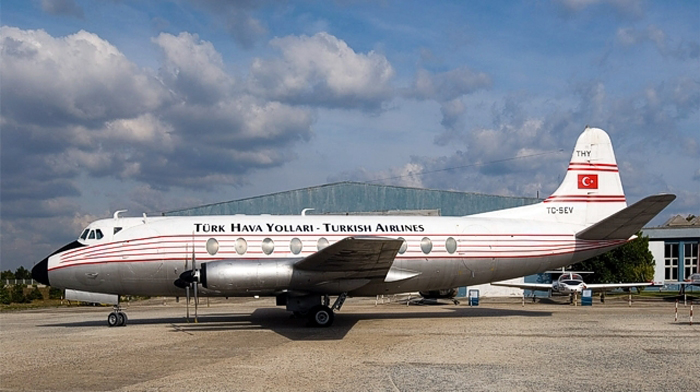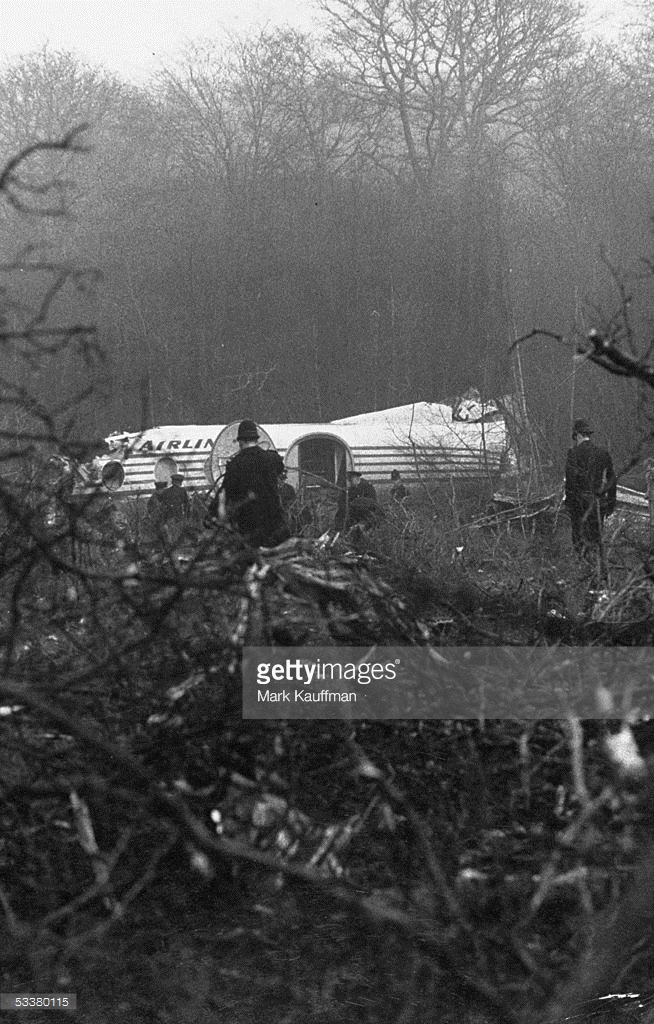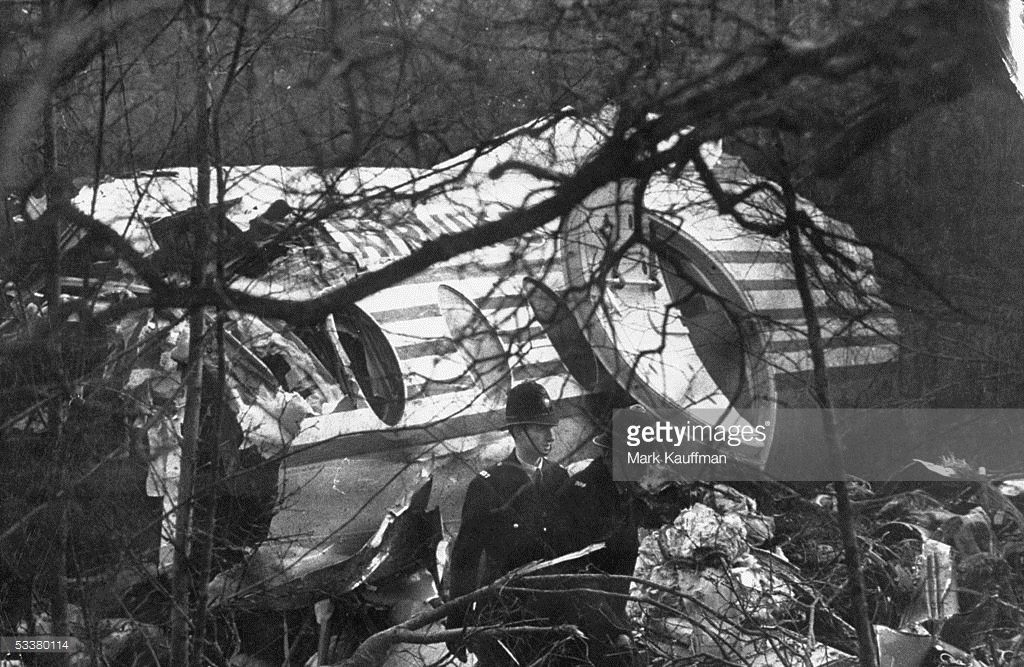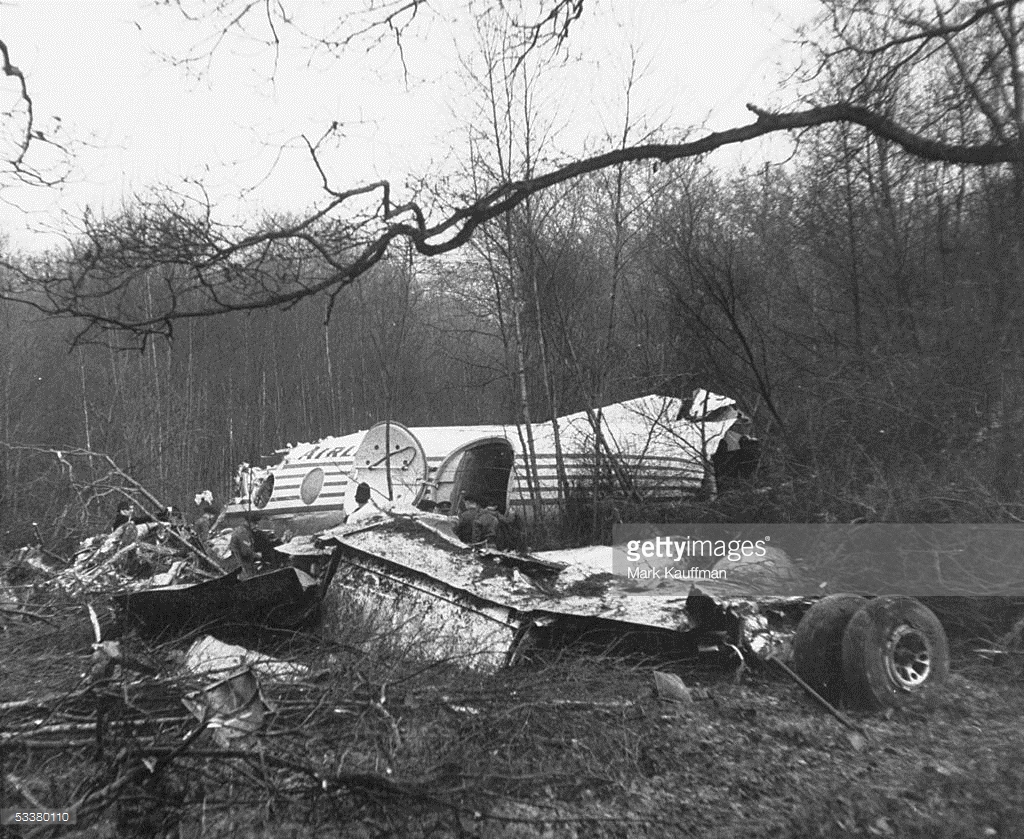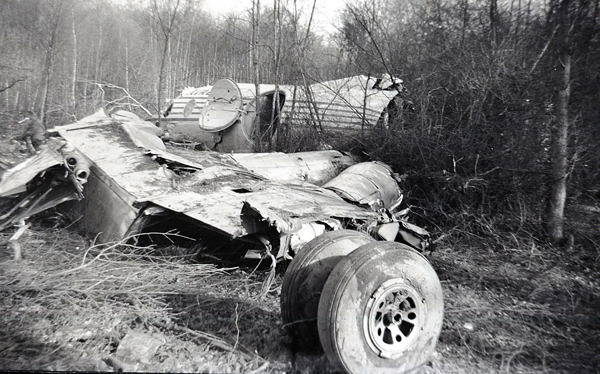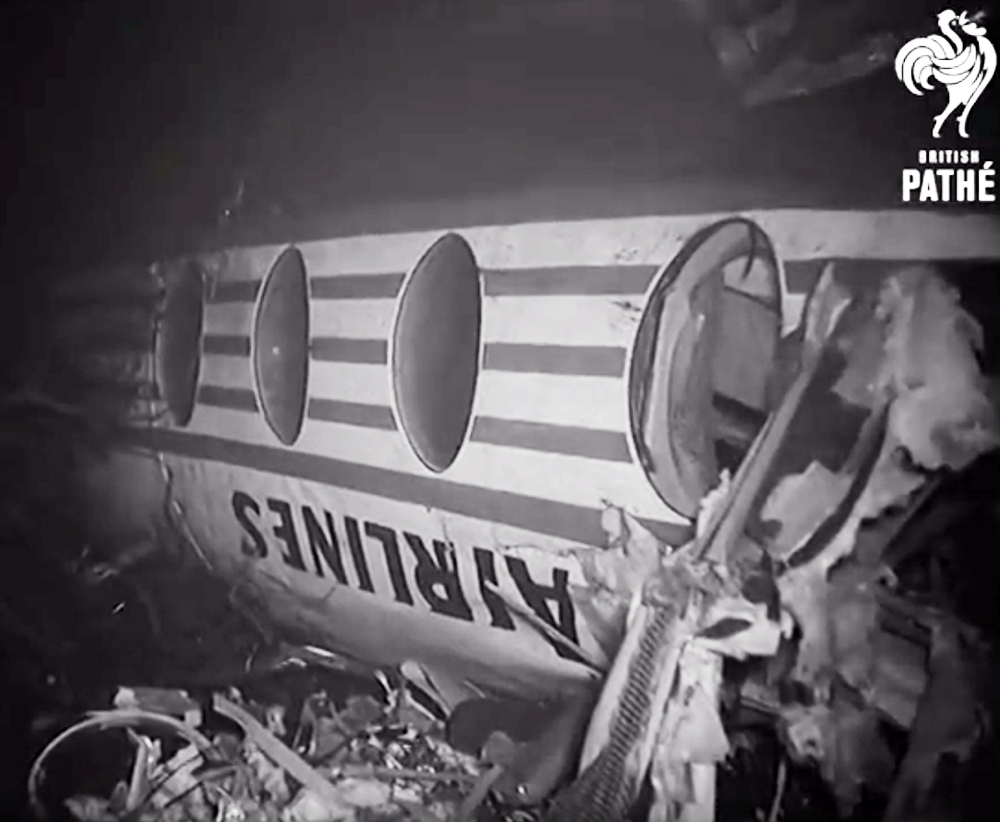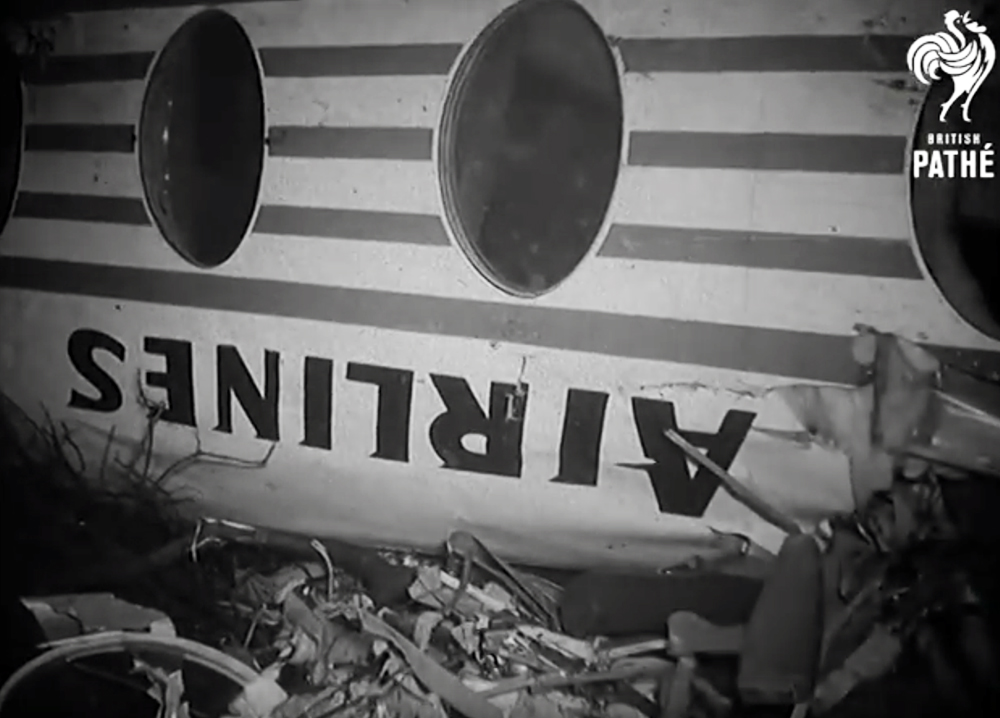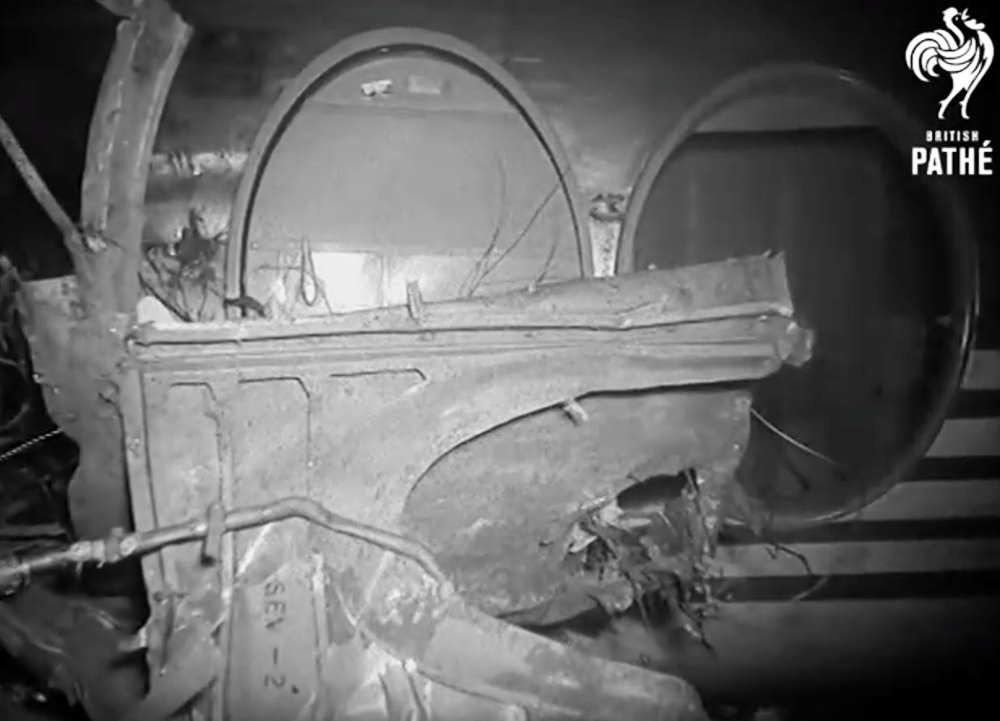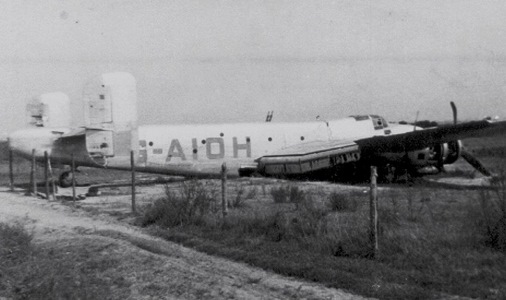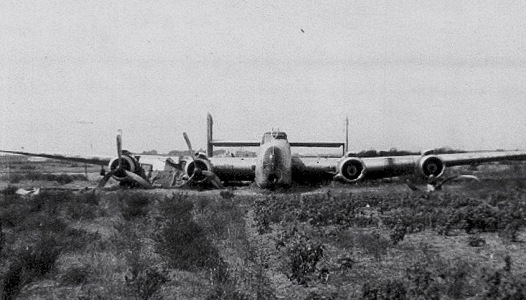Crash of a Vickers 610 Viking 1B in Lyon
Date & Time:
Aug 14, 1961 at 1645 LT
Registration:
G-AJCE
Survivors:
Yes
Schedule:
Palma de Majorca – Lyon – London-Gatwick
MSN:
256
YOM:
1947
Crew on board:
3
Crew fatalities:
Pax on board:
37
Pax fatalities:
Other fatalities:
Total fatalities:
0
Circumstances:
The twin engine aircraft was performing a charter flight from Palm de Majorca to London-Gatwick Airport with an intermediate stop at Lyon-Bron. Shortly after takeoff from Bron Airport, while climbing, both engines failed quite simultaneously. The pilot attempted an emergency landing and the aircraft crash landed in a field located near the airport. All 40 occupants were evacuated safely while the aircraft was damaged beyond repair.
Probable cause:
The failure of the starboard engine was the consequence of the breaking of a seal in the hydraulic propeller pitch control system. The breakage caused periodic variation of the pitch and hence variations in the speed of the engine. The vibrations of the port engine according to the statement of the crew and experts, were undoubtedly due to an ignition defect. The ignition harness was found to be below requirements.




